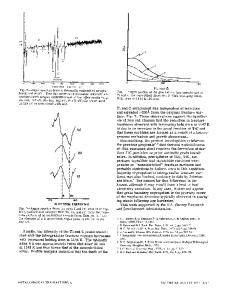A model for interphase precipitation in V-microalloyed structural steels
- PDF / 556,448 Bytes
- 12 Pages / 612 x 792 pts (letter) Page_size
- 81 Downloads / 345 Views
D
THE precipitation of V carbonitrides in V-microalloyed steels can occur either randomly in ferrite in the wake of the migrating austenite-ferrite (␥ /␣) interface (general precipitation) or by interphase precipitation characterized by the development of sheets of particles parallel to the ␥ /␣ interface formed repeatedly, with rather regular spacing. Many investigations have shown that, for compositions typical of V-alloyed structural steels, the general precipitation takes place at lower temperatures, typically below 700 ⬚C, and the interphase precipitation takes place at higher temperatures. Figure 1 shows the typical morphology of interphase precipitation of V(C,N) in microalloyed 0.10 pct C-0.12 pct V steels. Already, from its appearance, one can conclude that such a microstructure is formed by repeated nucleation of particles in the ␥ /␣ interface as the transformation front moves through the austenite. For this type of steel composition, it is normally observed in the temperature range from 800 ⬚C to 700 ⬚C. Despite its clear relation to the migrating ␥ /␣ interface, there has been discussion in the literature regarding whether the interphase precipitation nucleates in the boundary, ahead of it in the austenite, or behind it in the ferrite. However, firm experimental evidence now exists that shows that it actually nucleates in the interface.[1] By electron microscopy of steels with high alloy contents that stabilize the austenite to room temperature, it has been possible to directly observe V(C,N) particles in the ␥ /␣ boundary. Also, from a very general viewpoint, it is to be expected that, in RUNE LAGNEBORG, Professor and Former Director of the Institute, and STANISLAW ZAJAC, Group Leader, are with the Mechanical Metallurgy Department, Swedish Institute for Metals Research, S-11428 Stockholm, Sweden. Manuscript submitted March 21, 2000. METALLURGICAL AND MATERIALS TRANSACTIONS A
some high-temperature region where the chemical driving force for precipitation is low, nature chooses the sites where nucleation is energetically most favored, viz., the interface. At lower temperatures where the driving force is large, we might expect general nucleation in the ferrite matrix to occur. At high transformation temperatures, ⬃800 ⬚C, for typical compositions of V-microalloyed structural steels, the interphase precipitation consists of irregularly spaced and often curved sheets of V(C,N) particles. With decreasing temperatures, the occurrence of curved rows of precipitates diminishes and the dominant mode is regularly spaced, planar sheets of particles (Figure 1). Below about 700 ⬚C, the interphase precipitation is commonly found to be less frequent, and random precipitation from supersaturated ferrite after the ␥ /␣ transformation takes over progressively with decreasing temperature. A characteristic feature of interphase precipitation is that it becomes more refined at lower temperatures, as confirmed by many investigations.[2,3] This is demonstrated for the intersheet spacing in 0.10 pct C-0.12 pct V steels in Fig
Data Loading...











